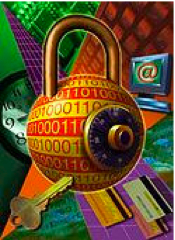

Time to Modernize
Mainframe Security
In 2004, JME Software began to
architect a replacement for
existing legacy mainframe
security systems (RACF, ACF2,
and Top Secret) with a software
development team spread across
the US and beyond. "We found ourselves dispersed
across the country with many
developers trying to access a
remote resource with large
compile times", commented
Barry Schrager, Vice President
of Software Development at
JME Software.
"The Dignus Cross development
environment significantly
reduced our compile times and
enabled our developers to work
independently."
"We wanted to use the C
programming language for
development so that we can
extend mainframe-style security
to other platforms - including
Linux, UNIX, Solaris and
Windows versions - in upcoming
releases."


JME's developers learned about
Dignus early on an dhave used
the Dignus Systems/C compiler
and Systems/ASM assembler to
create the DEADBOLT security
system for z/OS and future
mainframe environments. "We could not have created this
new solution without the Dignus
Systems/C development
product," said Schrager.
Run-time
Environment
Systems/C enables
developers to program in C
and create products for z/OS,
OS/390, Linux on zSeries
and other mainframe
environments. Using C
provides JME Software the
flexibilty to address its multi-
platform development
requirements. Systems/C
and Systems/ASM generate
objects which link in the
JME run-time environments.
Sytems/C offers a
Linux compatibilty mode that
developers can use to generate
Linux/390 objects in addition
to mainframe objects.

Compiler Features
Systems/C has severalfeatures, including the ability
to create commented
assembler source, direct in-
line assembler source and
other useful programming
features that enhance the
JME development
environment.
Furthermore, Systems/C
and Systems/ASM are
both available on Linux for
zSeries, enabling JME to use
these same Dignus products
for future development.

So -- What's a
DEADBOLT?
DEADBOLT is a new enterprise
security solution --- incorporating
the first new mainframe security
software system in 25 years!
DEADBOLT replaces RACF,
ACF2 or TOP SECRET as
the mainframe security system
but without the critical
problems typically encountered
in switching from one security
system to another.
DEADBOLT is unique in that
you can run it at the same time
as the existing RACF, ACF2 or
TOP SECRET security system.
While running alongside the
legacy system, DEADBOLT
audits the access attempts that
your current system permits or
denies and logs any differences.
You can run DEADBOLT in this
way -- as a live test -- for as long
as you want. You see exactly
how DEADBOLT would treat
every transaction request that
your existing system handles.

